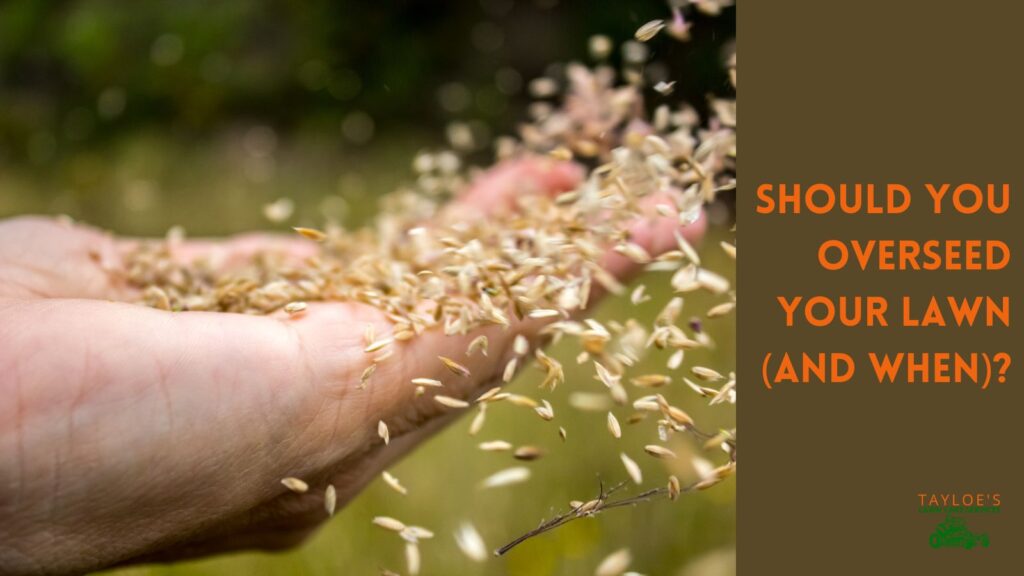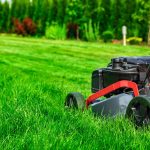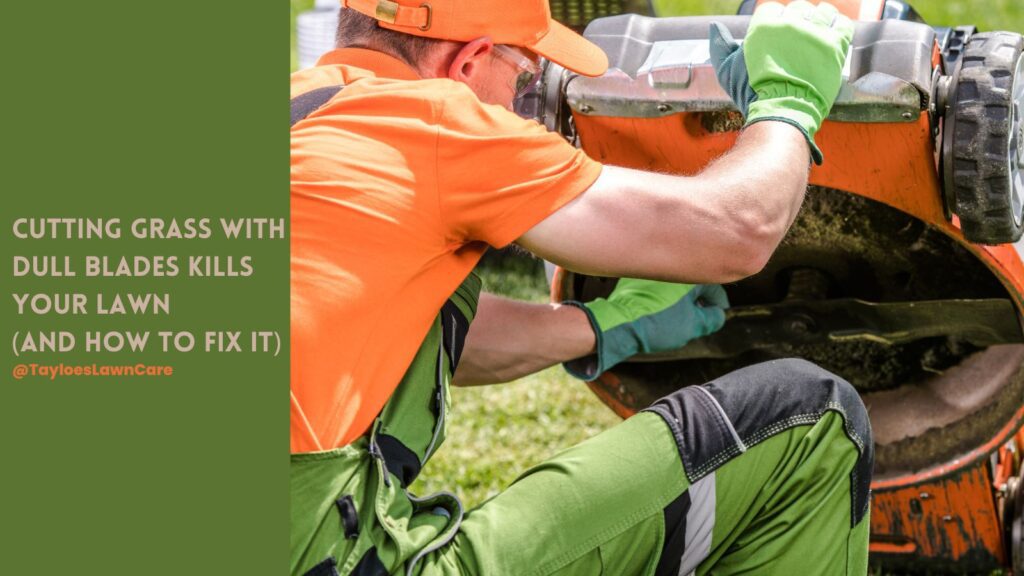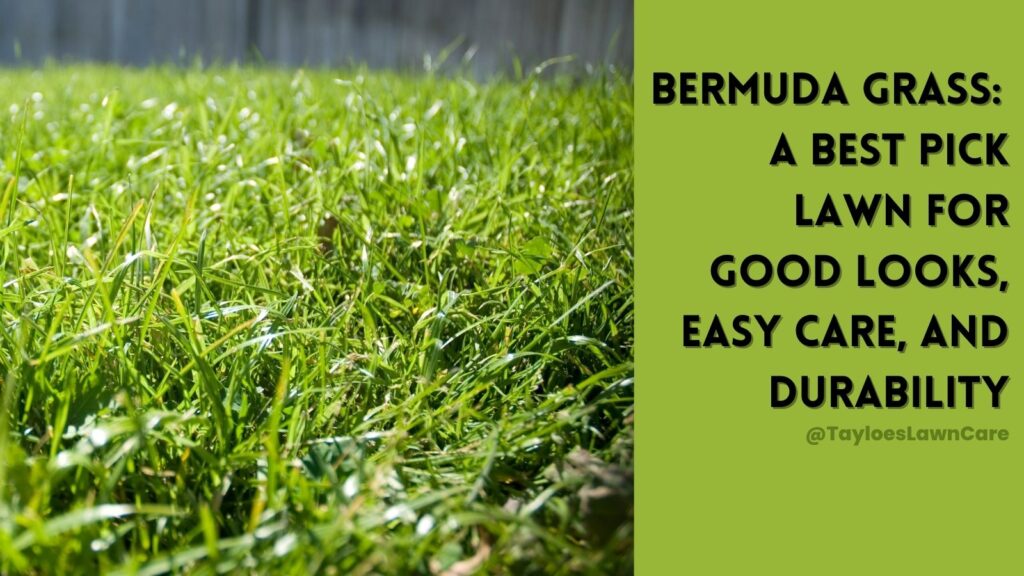Last Updated on: 24th February 2025, 07:42 am
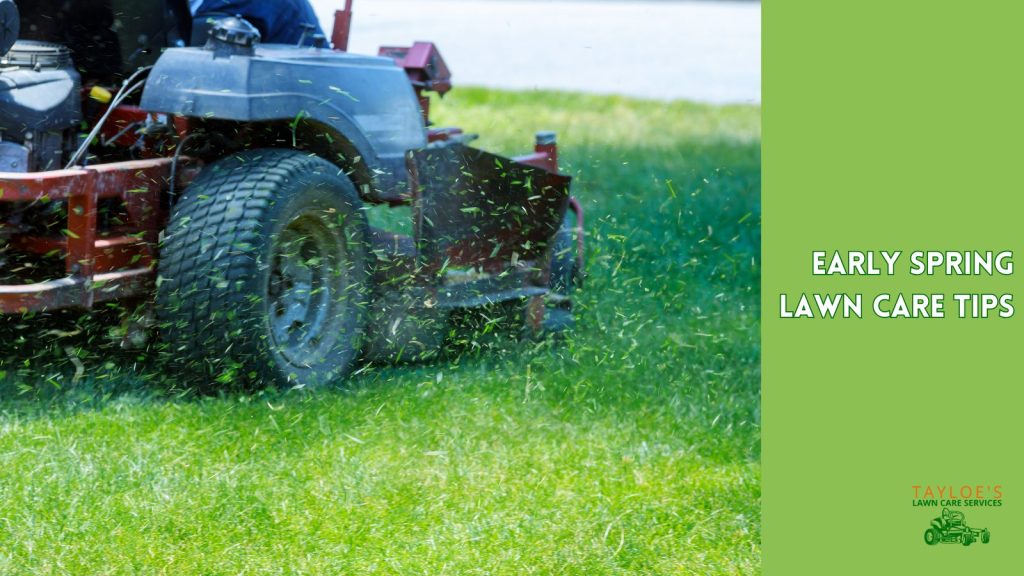
Spring season is the best time to prevent lawn problems.
Whether it’s stubborn weed plants, compacted soil, or thinning grass, early spring lawn care is your best defense against these common issues. By addressing them now, you’re not just saving yourself time and effort in the long run—you’re giving your lawn the healthiest start possible. A well-cared-for lawn in spring sets the stage for a lush, resilient yard that thrives all year long.
Whether you’re an experienced gardener or just starting out, these 15 tips will guide you toward creating a lawn you can truly be proud of.
Spring Lawn Care Tips
1. Begin with Your Lawn Mower
Before you even think about cutting grass in March or early April, ensure your mower is in good shape. Change the oil, replace the air filter if needed, and check the spark plug to avoid any hiccups when you start it up. Don’t skip sharpening the blade—a dull one tears the grass instead of cutting it cleanly, leaving it vulnerable to disease. Once everything is ready, fill up the tank, and your lawn mower will be ready for action.
2. Survey the Yard
Walk your lawn and note trouble spots like bare patches, pooling water, or signs of rodent damage, such as chewed grass or burrow holes. Identifying issues early helps you address them before they worsen. Check shaded areas too—grass here might need extra care or reseeding with a shade-tolerant mix.
3. Clear Away Winter’s Mess
After winter, your lawn probably has its fair share of leftover debris—fallen branches, leaves, and all kinds of clutter. Grab a rake or leaf blower and clear it out to allow your grass to breathe. Don’t forget your vegetable garden either—weeds and leaves love to sneak in there too! Instead of tossing all that debris, why not compost it? You can turn it into rich mulch that’ll help your lawn and plants thrive as the warmer weather sets in.
4. Rake, But Gently
A gentle spring raking does more than clean up—it also breaks up thatch, the layer of dead grass and organic materials that can smother your lawn. Use a lightweight rake and work carefully, focusing on areas where the thatch feels thick. If the surface is soft from spring rains, wait for it to dry out a bit before raking to avoid damaging the soil.
Avoid raking out all the brown grass or thatch until late summer or fall.
5. Test Your Soil
Healthy grass starts with healthy soil. A soil test can reveal if your lawn needs a little extra help, like adjusting the pH or adding specific nutrients. Pick up a test kit at your local garden center or send soil sample to a testing service. If the pH is off, lime can balance acidity. Nutrient deficiencies? A tailored fertilizer or compost can work wonders.
Pro Tip: Testing every few years ensures you’re consistently giving your lawn what it needs to thrive throughout the growing season.
6. Aerate
Battling soil compaction? It’s time to aerate. This process entails poking small holes in the ground to allow water, air, and nutrients to reach the grass roots. For larger yards, you can rent a core aerator or hire a professional; for smaller spaces, a manual aerator works just fine. Be sure to pay special attention to high-traffic areas like pathways or spots where pets and kids frequently play.
For the best results, though, consider aerating in early fall, depending on the condition of your lawn.
7. Weed
Spring is the perfect time to get ahead of weeds, especially stubborn dandelions. To stop them from spreading, simply snap off their flower stems before they can seed. To eliminate them completely, pull the entire weed from the root zone.
For more aggressive weed prevention, pre-emergent and post-emergent herbicides are effective options. Pre-emergent herbicides target annuals like dandelions, while post-emergent ones tackle perennials.
Instead of spraying your entire lawn, which can be toxic, focus on spot-treating the affected areas—ideally before you mow. This method is safer and more targeted.
If you plan to overseed, avoid pre-emergent herbicides, as they’ll prevent new seed from germinating. If you must use them, wait until fall or only treat the weedy areas to protect your new grass.
8. Overseed
Overseeding is a great way to repair bare spots in your lawn caused by pet spots or heavy foot traffic. While fall is the ideal time to overseed, you can still achieve great results by overseeding in the spring.
Start by mowing your existing grass slightly shorter than usual to ensure the seed receives enough sun-light. Be sure to bag or rake up the grass clippings to allow the seed to sit directly on the soil. For areas with larger bare spots, consider adding a thin layer of topsoil before overseeding.
Once you’ve spread the seed, apply a slow-release nitrogen fertilizer to encourage healthy growth. Keep the seed moist until it germinates—usually within a couple weeks—and the new turf starts actively growing. Consistent moisture is essential for helping the plants establish roots and thrive.
9. Fertilize
Applying a slow-release fertilizer gives your grass the food it needs to thrive over time. Wait until the soil temperature reaches around 55°F to ensure the grass can fully absorb the nutrients. Be cautious not to over-fertilize—too much can harm your lawn rather than help it.
10. Water Wisely
Once the weather warms up, it’s important to get your watering routine right. Deep, infrequent watering encourages grass roots to grow strong and deep, making your green lawn more resilient. Water early in the morning to reduce evaporation and give the grass time to dry before nightfall, which helps prevent fungal diseases.
11. Mow the New Growth High
When your grass starts growing in the spring, resist the urge to cut it too short. Set your mower blades high—around 3 inches—for the first mowing sessions. Taller grass develops deeper roots, improving drought tolerance and shading the soil to prevent weed growth.
For the:
- Cool-season grasses: Mow around mid-April, once the turf has greened up.
- Warm-season grasses: Late spring (Late April to early May) after the grass has fully emerged from dormancy and is well green.
12. Edge Beds
After tidying up your yard, take a moment to edge the flower beds, walkways, and driveways. A clean, crisp edge adds a finished look and prevents grass and other plants from creeping where they don’t belong. Use a spade, edging tool, or even a string trimmer for precision. Once you’ve established those sharp lines, maintaining them throughout the season becomes much easier.
13. Apply Mulch
Mulching tidies up your garden beds but also plays a crucial role in retaining moisture, regulating soil temperature, and suppressing weeds. A 2-3 inch layer around plants and trees nourishes the soil as it decomposes. Just be sure to leave space around the stems to prevent rot.
14. Plant a Few Late Winter/Early Spring Vegetables
Take full advantage of the cooler temperatures in early spring by planting hardy, cool-season crops like carrots, lettuce, spinach, kale, radishes, and Swiss chard. These vegetables flourish in mild conditions, especially when planted in rich, well-prepared garden soil, giving you a head start on your garden and fresh produce to enjoy long before summertime.
For an earlier start, consider getting your vegetable plants started indoors, then transplant them in the garden after the last frost, ensuring they’re ready to take off as soon as the soil warms up.
15. Watch for Pests
As your lawn awakens this spring, so do pests. Yellow or brown patches may indicate grubs, chinch bugs, or other invaders. Treat early with targeted solutions or natural predators like nematodes to keep your lawn and plants thriving and pest-free all season.
Plan for Early Spring Lawn Care
Consistency is key to a healthy lawn. Set a mowing, fertilizing, and watering schedule to stay on top of your yard’s needs. Having a plan in place ensures your lawn stays vibrant all season long.
With a little effort this early spring, you’ll be well on your way to a lawn you love. These 15 tips are your starting point for success.
Need professional assistance? Contact Tayloe’s Lawn Care Services at 252.287.3376, and don’t forget to follow us on Facebook for more expert tips!
Author Profile

- Randy Tayloe is the COO of Tayloe's Lawn Care Service, LLC. He is a certified custom applicator, recognized by the North Carolina Department of Agriculture Pesticide Division. A native of Bertie County, NC, and graduate of Bertie High School, he wants to beautify his home county - one yard at a time.
Latest entries
 FaunaOctober 3, 2025Fall decorations that endanger wildlife (and how to avoid the risks)
FaunaOctober 3, 2025Fall decorations that endanger wildlife (and how to avoid the risks) GardeningApril 1, 2025Fountain grasses add colorful foliage and movement
GardeningApril 1, 2025Fountain grasses add colorful foliage and movement GardeningMarch 21, 2025White cloud muhly grass growing guide
GardeningMarch 21, 2025White cloud muhly grass growing guide Lawn CareFebruary 25, 2025Should I mow every week?
Lawn CareFebruary 25, 2025Should I mow every week?


